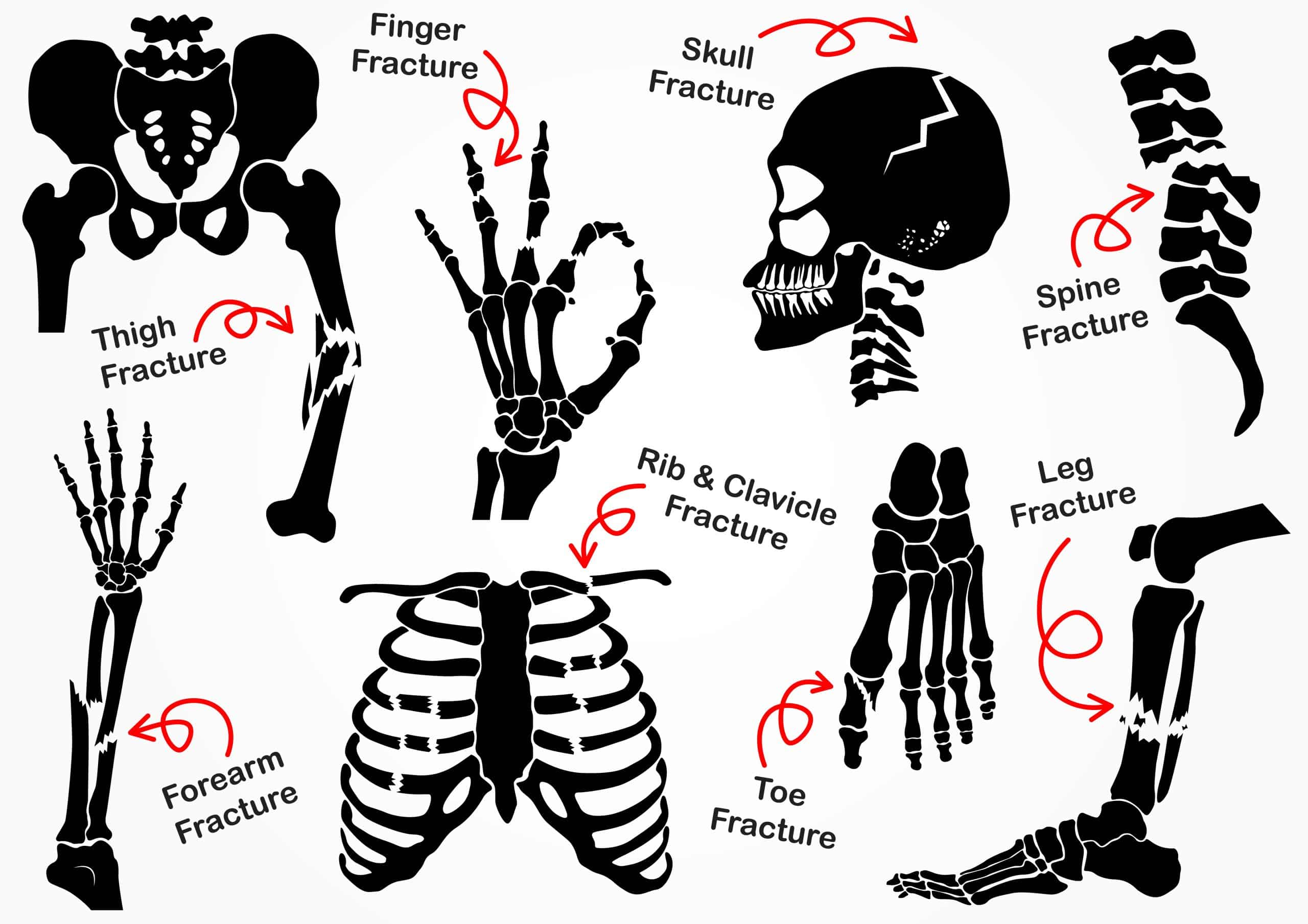
After being involved in a car accident, drivers can suffer from several different types of bone fractures. Here are some of the best ways to identify and treat them:
Avulsion Fracture – These are fractures that occur when one of your ligaments or muscles pulls on a bone.
Comminuted fracture – This is when a bone happens to shatter into several pieces.
Compression (Crush) fracture – This type of fracture will tend to show up in the front portion of your spine – often termed the “spongy bone”.
Fracture dislocation – A fracture that occurs when a certain joint becomes dislocated.
Greenstick fracture – These fractures generally happen to young children, as their bones are more elastic than adult bones. It occurs when the bone fractures off to one side but doesn’t break completely.
Hairline fracture – A fracture that is a partial fracture of the bone. It also can be more difficult to detect with everyday X-rays.
Impacted fracture – This type of fracture occurs on the bone. If one fragment of a bone is severed into another.
Longitudinal fracture – This occurs when a break along the bone happens.
Oblique fracture – This type of fracture is one that is diagonal to any bone’s long axis.
Pathological fracture – A fracture that occurs when an underlying disease has severely weakened the bone with results in a fracture.
Spiral fracture – When one part of a bone becomes twisted or mangled.
Stress fracture – This occurs once a bone completely breaks after repeated strain and stress happening to the bone.
Torus (buckle) fracture – When a bone becomes disfigured but doesn’t break completely. Largely seen in children.
Transverse fracture – A fracture that occurs after a direct break across any bone.
After being involved in a car accident, fractures can be discovered from certain physical symptoms that come up. Don’t allow pain to persist or go untreated as this can lead to further damage to your overall health. The symptoms can vary depending on the type of fracture that a driver receives. These can consist of the following:
Pain in a certain area – Any area in the body that a driver feels pain can be an indication something occurred after the car accident.
Swelling – Any bruising or swelling of an area could indicate a problem area that should be checked out.
Trouble maneuvering like usual – If there is any loss of certain mobility, be it walking, lifting arms, etc., this could be an indication there is a fracture.
Throbbing, pinching, tightness in the area – Fractures can produce an immense amount of pain at times; particularly ones that aren’t what is termed a “clean break”. Throbbing, tightness and pinching or soreness can all occur.
Doctor Exams – When pain persists from any physical symptoms, the best course of action is to verify the symptoms via a routine doctor visit. Doctors can perform x-rays, other scans that will identify any hidden fractures or injuries.
Visible – Sometimes with severe cases, bones and ligaments can break through the skin and the injury will be visible in nature and alert the need for immediate medical attention. Fractures that are visible are most often seen in the legs.
Depending on the type and severity of the bone fracture will determine which treatment course of action you should take.
Some of the different treatment options are:
Physical Therapy sessions – These are often encouraged for all types of fractures, regardless if surgery was involved in the injury or not. Physical therapists will work with patients that need help to regain the muscle movements and subsequently help the healing process along. Various exercises can be utilized in order to help with strength training for the patient. For leg fractures, this is often machines such as an exercise bike, the use of a treadmill for walking, etc. The rebuilding of the area in and around the area will increase the recovery time.
Surgery – In extreme cases, such as a bone protrusion, surgeries can be performed in order to get a bone or ligament back into place to then start the healing process. Often, rods, stints or other fastening measures are used to hold the bone back into its proper place. Doctors will help you determine if surgery is needed.
Casts, Slings – With many bone fractures, the course of action taken for treatment is to place a cast onto the broken bone. Since bones will heal on their own, a cast is a tried and true way for doctors to provide the best form of treatment.
After being involved in a car accident and you have any physical symptoms, or visible changes, be sure to get a full check-up, as this could be an indication of an undetected fracture. If you are looking to find a doctor, visit here.
Find A Doctor | New York Doctors | New Jersey Doctors | Connecticut Doctors
Medical Services | Conditions Treated | Insurance | Contact Us | Privacy Policy | Site Map | Terms of Service | Blog | Advertising
This site does not provide or endorse any medical or legal advice. All medical practices listed on this site are independently owned and operated by licensed physicians. Learn more
Copyright © var currentYear = new Date().getFullYear();document.write(currentYear); Injured Call Today. All Rights Reserved.
